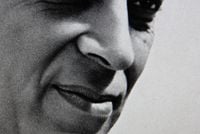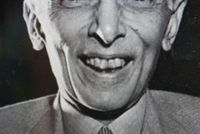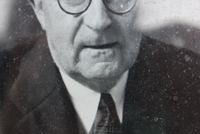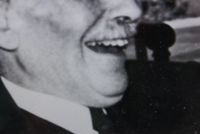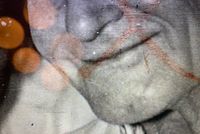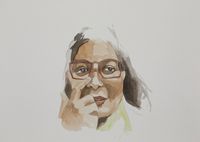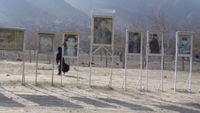Bani Abidi's early engagement with video, beginning at the Art Institute, led to the incorporation of performance and photography into her work. These mediums have provided Abidi with potent, sometimes subversive means to address problems of nationalism—specifically those surrounding the Indian-Pakistani conflict and the violent legacy of the 1947 partition dividing the two countries—and their uneven representation in the mass media. She is particularly interested in how these issues affect everyday life and individual experience.
Read MoreOne of Abidi’s earliest videos, Mangoes (1999), reveals her barbed sense of humour. Two women—one Indian, one Pakistani, both played by the artist—eat mangoes and reminisce about their childhoods. Soon, however, their amiable chatter escalates into competitive boasting about the fruit grown in their respective homelands, which they reference from memory as expatriates. The artist uses a similar tactic in the two-channel video The News (2001). Here, a Pakistani and an Indian newscaster, again both performed by Abidi, issue divergent reports of the same event, based on a familiar joke. In addition to video, Abidi also works with photography, digital imaging, and installation. For Karachi—Series 1 (2009), she photographed non-Muslim Pakistanis in the street at dusk during the holy month of Ramadan, when the metropolis is quiet as Muslims sit down to break their fast. Abidi renders visible the Hindu and Christian minorities, which together constitute less than five per cent of the population, acknowledging that the city is their home too by inviting them to carry out mundane domestic activities—reading a newspaper, ironing, arranging flowers—in public space. These are ambivalent portraits, each labeled with the subject’s name, time, and date, as if they were documents of surveillance. The figures are shot from behind at a wide angle, the light of the setting sun heightening the oddity of their interpolation into the streetscape—as does the images’ lightbox presentation. But while politics and cultural critique pervade Abidi’s oeuvre, aesthetics remain her primary concern; these works may act as catalysts, but the responsibility for real change ultimately resides with the viewer.
Abidi studied painting and printmaking, earning a BFA from the National College of Arts, Lahore, Pakistan, in 1994. She later attended the School of the Art Institute of Chicago, earning an MFA in 1999. She completed residencies with the Skowhegan School of Painting and Sculpture, Maine (2000), Fukuoka Art Exchange Program, Japan (2005), and DAAD Artists-in-Berlin Program (2011–12).
Solo exhibitions of Abidi’s work have been presented at V. M. Art Gallery, Karachi (2006 and 2010); Oberwelt, Stuttgart (2006); Gallery TPW, Toronto (2007); Gallery SKE, Bangalore (2008); Green Cardamom, London (2008 and 2010); Project 88, Mumbai (2010); Baltic Center for Contemporary Art, Gateshead, United Kingdom (2011); and Experimenter, Kolkata (2012–13). Important group exhibitions include: Fukuoka Asian Art Triennial (2005); Thermocline of Art: New Asian Waves, ZKM Center for Art and Media, Karlsruhe (2007); Annual Report: A Year in Exhibitions, Gwangju Biennial, South Korea (2008); Hanging Fire: Contemporary Art from Pakistan, Asia Society, New York (2009); The Spectacle of the Everyday, Lyon Biennial, France (2009); Where Three Dreams Cross: 150 Years of Photography from India, Pakistan and Bangladesh, Whitechapel Art Gallery, London, and Fotomuseum Winterthur, Switzerland (2010); The Global Contemporary: Art Worlds After 1989, ZKM Center for Art and Media, Karlsruhe (2011); Making Normative Orders: Demonstrations of Power, Doubt and Protest, Frankfurter Kunstverein, Frankfurt (2012); and Documenta 13 (2012). Abidi lives and works between Karachi and New Delhi.
Text courtesy Solomon R. Guggenheim Museum
